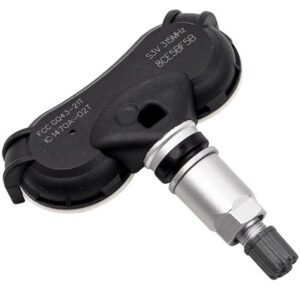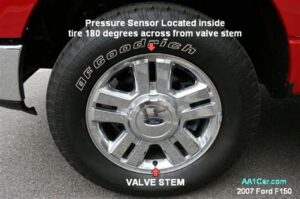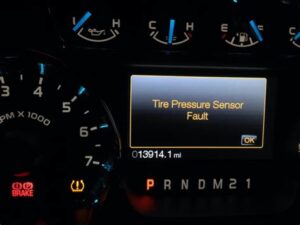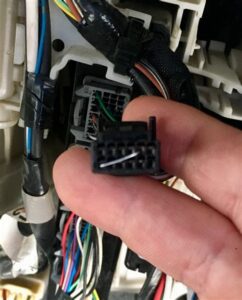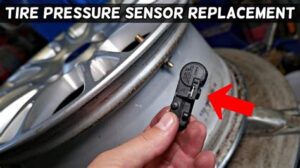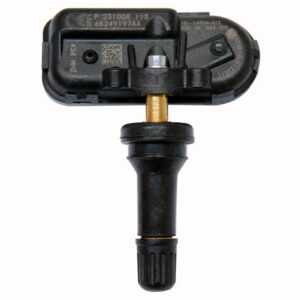Explore the Acura RDX tire pressure sensor, its importance, common issues, choosing replacements, and tips for maintaining optimal TPMS performance.When it comes to ensuring your Acura RDX runs smoothly and safely, one crucial aspect often overlooked is the tire pressure sensor. This small yet vital component plays a significant role in monitoring tire pressure and alerting drivers to any irregularities. In this blog post, we will delve into the workings of the Acura RDX tire pressure sensor, emphasizing its importance in maintaining tire health and overall vehicle performance. We’ll explore common issues that can arise with the Tire Pressure Monitoring System (TPMS) and provide guidance on selecting the right replacement sensors. Additionally, we’ll discuss essential tips for maintaining your TPMS, ensuring it operates at its best to keep you safe on the road. Join us as we unpack everything you need to know about the tire pressure sensor in your Acura RDX.
Understanding Acura RDX Tire Pressure Sensor
The Acura RDX tire pressure sensor is an essential component of the vehicle’s Tire Pressure Monitoring System (TPMS). This system plays a vital role in ensuring your safety and enhancing the performance of your vehicle, making it crucial to understand how it works and its implications for your driving experience.
The primary function of the tire pressure sensor is to monitor the air pressure within each tire and alert the driver when the pressure falls below a specific threshold. This is important because under-inflated tires can lead to compromised vehicle handling, increased tire wear, and even blowouts. Here are some key points that further highlight the function and importance of the tire pressure sensor:
- Real-Time Monitoring: The sensors continuously track tire pressure and send this information to the vehicle’s onboard computer.
- Driver Alerts: If tire pressure drops significantly, the system activates a warning light on the dashboard.
- Fuel Efficiency: Maintaining optimal tire pressure can improve fuel efficiency, reducing costs over time.
- Safety: Accurate monitoring helps to mitigate risks associated with flat tires and blowouts, protecting the driver and passengers.
In the Acura RDX, TPMS utilizes either direct or indirect systems. The direct system employs pressure sensors in each tire, providing precise readings of tire pressure. In contrast, the indirect system monitors the rotational speed of the tires to estimate pressure changes. Understanding which system your Acura RDX employs is essential for proper maintenance and calibration.
Regularly checking your tire pressure can prevent accidents and prolong the lifespan of your tires.
For owners of the Acura RDX, being aware of how the tire pressure sensor works and the significance of maintaining proper tire pressure is critical for not only vehicle performance but also for ensuring a safe driving experience.
Importance of Tire Pressure Monitoring
Tire pressure monitoring is an essential aspect of vehicle maintenance that ensures safety, performance, and efficiency. It is particularly significant for vehicles like the Acura RDX, where proper tire pressure contributes to optimal driving conditions.
Maintaining the correct tire pressure in your Acura RDX not only improves fuel efficiency but also enhances the overall driving experience. Here are some key reasons why tire pressure monitoring is crucial:
| Reason | Description |
|---|---|
| Safety | Properly inflated tires ensure better traction and handling, significantly reducing the risk of accidents. |
| Fuel Efficiency | Under-inflated tires can increase rolling resistance, leading to poor fuel economy. Maintaining the right pressure can improve your Acura RDX‘s fuel efficiency. |
| Tire Longevity | By keeping tires properly inflated, you can help extend their lifespan and reduce wear and tear. |
| Environmental Impact | Improving fuel efficiency by maintaining correct tire pressure can reduce overall emissions, contributing to a cleaner environment. |
Furthermore, neglecting tire pressure can lead to common issues such as tire blowouts and uneven tire wear. It is advisable to check the tire pressure regularly, especially in changing weather conditions.
In conclusion, the importance of tire pressure monitoring extends beyond mere convenience. For Acura RDX owners, it plays a vital role in enhancing safety, performance, and efficiency. Regular checks and maintenance of your tire pressure sensor are essential for a smooth and reliable driving experience.
Common Issues with TPMS
The Tire Pressure Monitoring System (TPMS) is a crucial component of modern vehicles like the Acura RDX. Although it’s designed to help maintain optimal tire pressure and ensure safety, various issues can arise that may impede its functionality. Below, we will explore some of the common issues associated with TPMS.
| Issue | Description |
|---|---|
| Faulty Sensors | Over time, TPMS sensors can become damaged or fail to operate correctly due to age, corrosion, or impact. |
| Low Battery | Each TPMS sensor has a battery that can deplete over time, leading to false warnings. |
| Signal Interference | Other electronic devices in the vehicle may interfere with the communication between the TPMS sensors and the vehicle’s computer. |
| Improper Tire Installation | When tires are installed or changed, sensors can be improperly relocated or not paired correctly, leading to malfunction. |
| Temperature Effects | Extreme temperature changes can affect tire pressure, leading to premature TPMS alerts, especially in colder climates. |
Identifying and addressing these common issues promptly can help in maintaining a fully functional TPMS system, ensuring that your Acura RDX remains safe and efficient on the road.
A well-functioning TPMS not only contributes to tire longevity but also plays an essential role in overall vehicle safety. – Automotive Expert
Choosing the Right Replacement Sensors
When it comes to ensuring the optimal performance of your Acura RDX‘s Tire Pressure Monitoring System (TPMS), selecting the right replacement sensors is crucial. Properly functioning Tire Pressure Sensors not only enhance safety but also contribute to better fuel efficiency and tire longevity. Here are some important factors to consider when choosing the right replacement sensors for your Acura RDX:
| Factor | Description |
|---|---|
| Type of Sensor | Choose between direct or indirect TPMS sensors. Direct sensors are more common in newer models, providing accurate pressure readings directly from the tire. |
| Compatibility | Always check that the sensors are compatible with your vehicle model. Refer to your owner’s manual or OEM specifications. |
| Brand Reputation | Opt for well-known brands that have good customer reviews. High-quality sensors tend to be more reliable and durable. |
| Battery Life | Consider sensors with a long battery life to minimize maintenance. Most sensors will need replacement every 5 to 7 years. |
| Price | While you don’t want to compromise on quality, it’s essential to find sensors that fit your budget. Compare prices from different suppliers. |
Before making a purchase, it may also be beneficial to consult with a professional mechanic or tire specialist. They can provide valuable insights and recommendations tailored specifically to your Acura RDX.
By taking the time to carefully choose the right replacement sensors, you’ll ensure that your TPMS remains functional and accurate, ultimately enhancing your driving experience.
Maintaining TPMS for Optimal Performance
The Tire Pressure Monitoring System (TPMS) is a crucial component in ensuring the safety and performance of your Acura RDX. Maintaining optimal functionality of the TPMS not only keeps you informed about the tire pressure but also enhances your vehicle’s overall performance.
1. Regularly Check Tire Pressure
One of the key methods to maintain your TPMS is to regularly check your tire pressure. Here’s a simple checklist to ensure appropriate tire pressure:
- Use a reliable tire pressure gauge.
- Check the tire pressure when the tires are cold.
- Refer to the manufacturer’s recommended PSI levels found on the driver’s side door jamb.
2. Inspect TPMS Sensors
TPMS sensors should be inspected periodically for signs of wear or damage. Regular inspection will help identify issues before they become more serious. Look for:
- Corrosion on the sensor contacts.
- Damaged valve stems.
- Check for any warning lights on the dashboard.
3. Battery Management
Most TPMS sensors are equipped with batteries that have a finite lifespan. Typically, these batteries last for about 5-10 years. To ensure optimal performance:
- Replace sensors when changing tires or during routine maintenance.
- Keep a record of sensor lifespan for timely replacements.
4. Calibration and Relearn Procedures
Whenever tires or TPMS sensors are replaced, it is essential to recalibrate or relearn the system. Failing to recalibrate may lead to inaccurate readings. Follow these steps:
- Refer to your Acura RDX user manual for specific instructions.
- Use an OBD-II scanner if necessary.
5. Professional Inspections
To maintain optimal performance, consider taking your vehicle to a professional for regular inspections. A certified mechanic can:
- Perform comprehensive diagnostics on the TPMS.
- Check for software updates and system recalibrations.
Final Thoughts
Regular maintenance of your TPMS plays a vital role in your safety and the longevity of your Acura RDX. By adhering to these maintenance tips, you can ensure that your tire pressure monitoring system operates effectively, helping to prevent tire blowouts and improving fuel efficiency.
Frequently Asked Questions
What is the purpose of the tire pressure sensor in the Acura RDX?
The tire pressure sensor monitors the air pressure in the tires and alerts the driver when the pressure falls below a safe level, helping to ensure safe driving conditions.
How can I check the tire pressure on my Acura RDX?
You can check the tire pressure by using a tire pressure gauge or through the vehicle’s onboard computer display, which shows the pressure readings for each tire.
What should I do if the tire pressure warning light comes on in my Acura RDX?
If the tire pressure warning light comes on, check the tire pressure with a gauge and inflate any low tires to the recommended pressure. If the light remains on, there may be a fault with the sensor that needs to be checked.
Where can I find the recommended tire pressure for my Acura RDX?
The recommended tire pressure can usually be found on a sticker located on the driver’s side door jamb or in the owner’s manual.
Can I reset the tire pressure sensor myself?
Yes, you can reset the tire pressure sensor yourself by following the reset procedure outlined in the owner’s manual, usually involving turning the ignition on and using specific button presses.
What could cause the tire pressure sensor to malfunction?
Malfunctions can be caused by dead batteries in the sensors, damaged sensors due to impacts, or issues with the vehicle’s computer system.
How often should I check the tire pressure in my Acura RDX?
It’s recommended to check the tire pressure at least once a month and before long trips to ensure safety and optimal vehicle performance.
